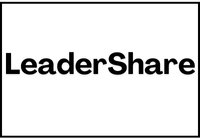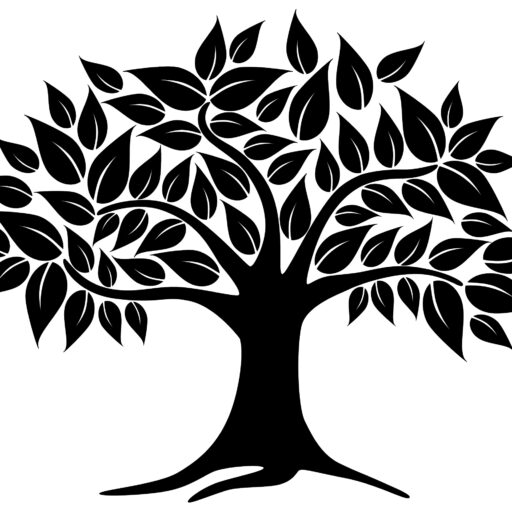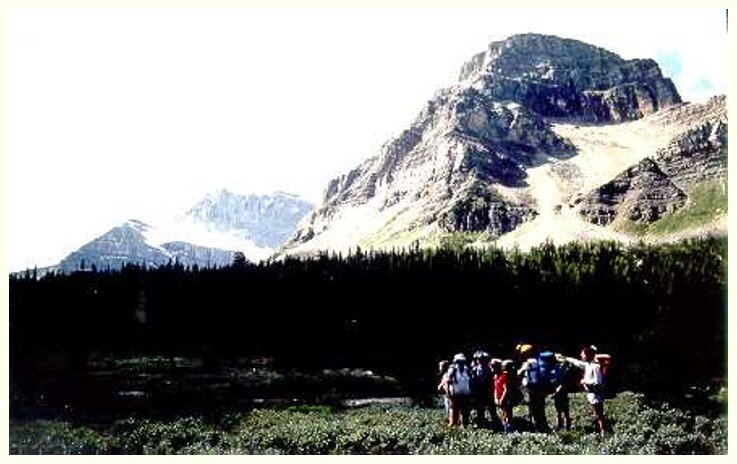Setting the Stage
It’s 1983. I am part of the team designing and delivering leadership and management development programs for The Banff Centre for Management. Among many other annual offerings, we host a series of Outward Bound programs; we call them the Banff Wilderness Seminars. These are essentially experiential programs aimed at self examination and personal growth; the process calls for participants to engage with others in a team setting, facing a physical problem/challenge to overcome, like ropes courses, ocean sailing, river rafting and so on. The method here is that one learns from observing his/her own behaviors and what one sees in teammates’ behaviors as the basis for leadership learning. In this situation, I have been tasked with persuading enough people to take a 9-day mountain-climbing course to make an economic go of the program.
The Challenge
First obstacles: I have no personal experience with Outward Bound programs, so it is difficult for me to try and talk to potential participants about the benefits of the program in a way that conveys personal conviction. And it’s a 9-day program … how many professional people have 9 days they can give up for such an adventure? The answer is ‘not that many’. Plus, who can afford this not inexpensive proposition? I decide I am going to be a participant myself, thereby setting out to get some valuable experience, as well as add my own name to the attendee list.
Next issues: I am absolutely petrified of heights!!! I have trouble getting up a 6ft ladder or leaning out over a bridge railing and now I’m going mountain-climbing? Anxieties abound. I don’t even have the right equipment to keep myself safe, nor do I have the money to buy it. All of which is leading me to a very real uphill battle (forgive the bad pun, please!).
Influencing My Outcomes
In the Experiment and Take Risks commitment of the Challenge the Process leadership practice, Jim Kouzes and Barry Posner tell us that we can learn to control our own lives and influence our outcomes. I turn to other leaders to help me apply this practice:
- equipment: my boss Gary Frey loans me his top-of-the-line mountain coat, my colleague Dave Rochefort lets me borrow his excellent climbing boots … I am starting to feel I have some tools-of-the-trade;
- the climb: I make a point of understanding what technical competence was going to be required. John Amatt and Rusty Baillie are the leaders of our upcoming climb (“the outer journey”, as they call it) and they were two key members of the first-ever successful Canadian Everest ascent the previous year. Lots to learn here!
- processing the experience: Dr. Layne Longfellow, a psychologist with the Menninger Foundation, is our facilitator. His role is to use his knowledge, skills and abilities to guide us through our learning, “the Inner Journey”. I am paying very close attention to his teachings, since my biggest challenges are all in my head.
The Outer Journey

Here is our destination: Mount Ptarmigan, a 10,003 ft. mountain just a bit north and east of lake Louise, Alberta. Here we are hiking in to Skoki Lodge, our base for the event. 7 days from now, we will be on top … well … so say John and Rusty, anyways.

On our way to Skoki Lodge, we start skill-building. This is one of us learning to rappel, to descend a vertical rock face, using a Whillans belt and a climbing rope. You can see that this climber has his rope fixed to a high point AND is being belayed from above, as an extra safety measure. As someone with some knowledge of the French language, I am slightly amused with the term ‘rappel’ … meaning ‘remember’ in French … how the heck am I ever going to forget what I am about to do!?

But look! I make it. That smile is 100% relief!

And this is how we learn, by doing, observing ourselves and others. Over the next few days, we do bouldering, walking on scree (waaaay tougher than it looks!), getting used to the workings of crampons, pitons, carabiners, ropes, etc.

This one is an utterly mid-bending challenge: the Tyrolean Traverse. I am actually horizontally-balanced on a single, skinny rope, hanging over a 75 ft. rock-filled gorge and my task is to cross it … lying on the single, skinny rope! Getting onto the rope is the biggest problem: how do I get my weight onto the rope when my mind cannot let go of the safe side of the gorge (i.e., the one I am clinging to)? To this day, I think it was only my belief that John and Rusty weren’t going to let me die (I hadn’t paid them yet…) that got me out there. BUT!!! back to the action: once my left ankle is hooked around the rope I am traversing, and my right leg hangs below it, my centre of balance is actually BELOW the rope and I feel perfectly safe! I can pull myself across the gorge easily!

Look at me go! Race anyone? I am a traversing machine!




Here’s another counter-intuitive centre-of-gravity lesson: you can actually get up and over this protruding rock if you can get a knee above the front edge of the protrusion. I feel like a contortionist at times, but once the lesson is learned, it sticks! These are the ‘small wins’ that Jim and Barry tell us are building blocks in experimenting and taking risks.

I can’t go up, no hand-holds. I can’t go down, I don’t even dare look. I can’t go sideways … well, I could go right, if I had any confidence that my right leg, which I shattered in a dozen pieces in a skiing accident a few years before, could carry my weight. I am clinging to the rock like a barnacle to a boat … I ain’t movin’, I ain’t letting go! John and Rusty are going to have to scrape me off.
And BTW, who do think is taking these pictures? Well, it ain’t me, I’m busy! I look over to my right side and there’s John, connected nonchalantly to the rock face, like a mountain goat, snapping away. I feel even less skilled … sigh!
Down below, my new teammates are shouting encouragement, thinking that when I hear their bellowed “Rah Rahs”, I will somehow turn into SpiderMan. Not me. I am actually pretty safe, right where I am, belayed from below, second belay from above.
Problem is, I can’t see the teammate who is belaying me from above, he is on a ledge. out-of-sight, holding onto to my rope, bless him! I stay frozen in place for what seems like an eternity. Then, as I happen to glance upwards, I see my teammate’s face peer over the edge of his ledge and hear him call down to me: “Hey Pete, are you all right? I got you, man.” I see him, I hear him and I see him holding my belay rope.
That does it! I put all my weight on that iffy leg, which gets me to a new hand-hold and … Bob’s-Your-Uncle, I am up to the ledge with my saviour. Two massive lessons for me here, ones that have stayed with me ever since:
- sometimes you have to put all your weight on your weakest member, you just have to “do it and believe”, as DeWitt Jones says. Indeed, from this experience, I have tried to give significant responsibility to keen, yet untested members of my teams, and I have rarely been disappointed; and
- in organizations, the good ones at least, there are people above you holding your belay rope. You can’t always see them, you hardly ever see the rope, but your hard-won experimentation and risk-taking teaches you that they are there.
Jim and Barry talk about needing to be “active learners”. OMG!!!



When we go for the summit, there are even more lessons to learn. Here we are, left to right:
- using our new crampon, piton and rope skills, each depending on each other for our success;
- crossing an extremely narrow stretch of loose rock to get to the summit (several thousand feet straight down on my left, several thousand feet down at a 45-degree angle on my right … so, no real reason to trust the right side more than the left!). I only find out after the event that it’s the fellow in front of me (I’m the one in Gary orange coat) who gets me across by tugging gently on my rope, I didn’t even notice him helping me! What a lesson! How many others in my life have gone unrecognized? There’s an Encourage the Heart commitment for us to make: paying attention to those gentle tugs on our life’s rope; and
- last, here we are, on top! Couple more incredible lessons: just like my friend and mentor Dr. Dick Hodgson of the University of Western Ontario once wrote: “when you get there, there’s no there there”. How right he was! We are on top of Mount Ptarmigan, but we are standing on a pile of rubble, not on the pristine mountain top that I imagined; there are now other peaks visible all around us, and most of them are higher than ours! Damn! I don’t feel like I have accomplished much at all. And as all this sinks in, on our way back down, I realize that it’s the journey, not the destination, that has given me the process to challenge.



1 Comment
1 Pingback